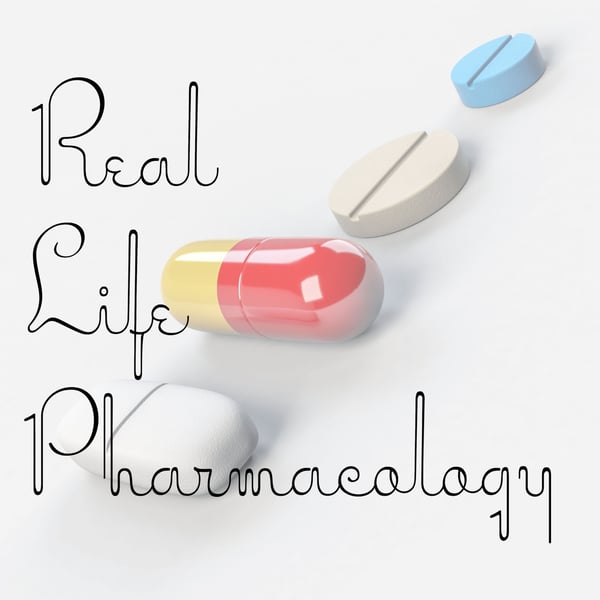Aripiprazole Pharmacology
Real Life Pharmacology - Pharmacology Education for Health Care Professionals
Eric Christianson, PharmD; Pharmacology Expert and Clinical Pharmacist
5 • 716 Ratings
🗓️ 21 January 2021
⏱️ 14 minutes
🧾️ Download transcript
Summary
Partial dopamine agonist activity and serotonergic activity make up a significant amount of aripiprazole's pharmacology.
Aripiprazole is classified as an antipsychotic and can be used in schizophrenia, bipolar disorder, and depression augmentation.
Aripiprazole can cause significant akathesia. I discuss this adverse effect on this episode.
Transcript
Click on a timestamp to play from that location
| 0:00.0 | Hey all, welcome back to the Real Life Pharmacology podcast. I'm your host, pharmacist, Derek Christensen. |
| 0:06.4 | Thank you so much for listening today. As always, go check out Real Life Pharmacology.com. |
| 0:12.3 | If you haven't already, snag your free 31-page PDF on the top 200 drugs. Great little study guide. |
| 0:19.8 | If you're looking to brush up on your skills, |
| 0:21.6 | remember a few things, or if you're preparing for board exams, pharmacology finals, things like that, |
| 0:28.1 | just great refreshers of things that commonly come up in practice and things that you may see |
| 0:33.8 | come up on exams as well. So the drug of the day today is aeropipyprosol. |
| 0:41.1 | A brand name of this medication is Abilify. This medication is classified as an antipsychotic. |
| 0:50.4 | Now any drug typically that's classified as an antipsychotic is going to have activity on dopamine receptors. |
| 1:01.6 | Now, Abilify, rarapriazole is slightly different in that it isn't quite as strong of a dopamine blocking agent at that D2 receptor as some of the other classically known antipsychotics, such as, you know, haloperidol or respiradone. |
| 1:22.5 | It's more of a partial agonist, so that mild stimulation, but it also blocks the dopamine 2 receptor |
| 1:33.4 | from being basically fully agonized or fully stimulated. And so if you remember from, you know, |
| 1:43.1 | pathophysiology and things like that. |
| 1:45.0 | Excessive dopamine is typically thought to be a significant component of causing symptoms of schizophrenia, |
| 1:53.0 | hallucinations, delusions, things of that nature. |
| 1:57.0 | So by, you know, blocking, reducing the activity of dopamine, it makes sense that it could potentially help those type of diagnoses. |
| 2:07.9 | In addition to that partial agonist at the D2 receptor, it's got some action on serotonin reupttake potentially, milder antihistamine type effect, |
| 2:22.1 | also milder alpha blocking effect compared to some other antipsychotics. |
| 2:27.7 | And we'll kind of touch on that a little bit in the adverse effect profile, |
| 2:31.7 | where it maybe differs from some of the other antipsychotics. |
| 2:35.5 | So uses. In clinical practice, I've certainly seen it for things like schizophrenia, bipolar disorder, |
| 2:43.0 | where we've got those hallucinations, delusions, a lot of those positive symptoms associated with schizophrenia, for example. |
... |
Please login to see the full transcript.
Disclaimer: The podcast and artwork embedded on this page are from Eric Christianson, PharmD; Pharmacology Expert and Clinical Pharmacist, and are the property of its owner and not affiliated with or endorsed by Tapesearch.
Generated transcripts are the property of Eric Christianson, PharmD; Pharmacology Expert and Clinical Pharmacist and are distributed freely under the Fair Use doctrine. Transcripts generated by Tapesearch are not guaranteed to be accurate.
Copyright © Tapesearch 2025.

